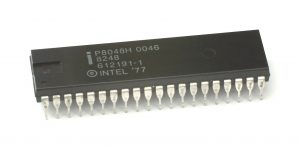
A look back at 40 years of electronics design
EP&T Magazine
Electronics Semiconductors Engineering Supply Chain IEEE-sponsored IEEE-sponsored trade show trade showsThe final instalment of EP&T's 40th anniversary column takes a look at the importance of large scale industry trade shows in the 1980s
Marking its 40th anniversary this year, EP&T is featuring this special column throughout 2019, providing readers with a peak at our past, while paying homage to our history.
—————————–
In this issue, A Look Back puts it focus on a news item, titled: New York’s ELECTRO ’79 sets the stage for the 80s, which appeared in EP&T’s June issue in 1979.
The original column stated:
Billed as the biggest electronic conference and show of the decade – ELECTRO 79 held in April of 1979 in New York City, was probably just that. Almost rivalling the huge IEEE-sponsored shows of the 1960s which used to take up to five floors of the New York Coliseum, more than 30,000 engineers visited the three-floor exhibit space containing more than 400 booths, displaying the ware of as many manufactures and distributor organizations.
Theme of ELECTRO 79 was ‘Electronics for the early 1980s: Its impact on industry and the individual.’
At the conference, the emphasis was less on microcomputers than had been the case at major electronic shows of the past few years. The consensus in the industry seemed to be that microprocessors have come of age as an accepted design tool, another component that the designer must consider when looking at a new system, instrument or control component.
For circuit designers, probably the most necessary technical session had to do with analog-to-digital LSI, the merger of linear and digital technology on a single chip.
Back in the day, engineers described how their devices were becoming practical design components in five extremely well received papers:
- Intel’s Rob Walker described the company’s 8022 single-chip microcomputer that allocates 30% of its chip area to voltage comparator, oscillator, zero-crossing detector and 8-bit A-to-D converter. He then gave as a design example a microwave oven controller using the chip that he claimed reduces overall system cost by reducing components.
- Michael Timko of Analog Devices described his company’s work using integrated injection logic (I2L) to produce high-accuracy linear bipolar monolithic wafers that can include high-density digital circuitry. He gave an illustration of the AD574 2-chip, 8-bit data acquisition system fabricated with the new technology: It can interface to a microprocessor bus with additional circuitry.
- In another paper dealing with PL technology, Phil Marcoux of Signetics described how that process had allowed integrated digital and linear circuits to be produced which perform the functions of A-to-D converter and telecommunications coder-decoder (codec).
-

Intel’s first microcontroller, the MCS-48 microcontroller (µC) series, was originally released in 1976. Its first members were 8048, 8035 and 8748. Initially this family was produced using NMOS technology, in the early 1980s it became available in CMOS technology. It was still manufactured into the 1990s to support older designs that still used it. Pictured here is the Intel 8048 single-chip microcomputer, a sister device to the firm’s 8022 single-chip microcomputer mentioned in the original news item. Photo Source: Konstantin Lanzet – CPU collection.
